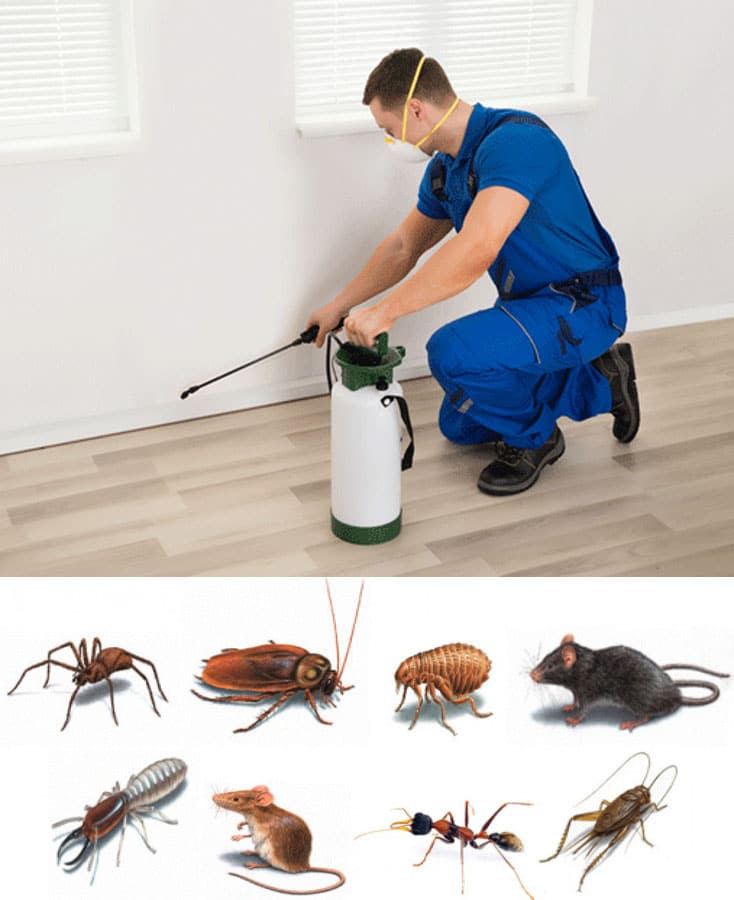A1 Bed Bug Exterminator Charlotte - Reliable and Budget-friendly Services
A1 Bed Bug Exterminator Charlotte - Reliable and Budget-friendly Services
Blog Article
Bed Insect Therapy Breakdown: Contrasting Chemical Vs. Non-Chemical Solutions
In the realm of pest control, specifically when managing the relentless issue of bed pests, the choice between chemical and non-chemical therapy services can be a pivotal one. Both techniques provide distinct advantages and disadvantages, influencing factors such as effectiveness, safety considerations, and overall expense. By analyzing the nuanced details of each approach, a more clear understanding of which path to go after in addressing a bed insect problem can be achieved.
Performance of Chemical Therapies
Chemical treatments for bed bug infestations have actually been extensively recognized for their potent and rapid efficiency in getting rid of these insects. When thinking about the efficiency of chemical treatments, it is important to comprehend that they can offer a quick and comprehensive service to a bed pest problem.
In addition, chemical treatments have the advantage of using recurring results, suggesting that they can remain to remove bed pests also after the preliminary application. This recurring action is particularly helpful in combating any kind of potential re-infestations. Additionally, the rapid activity of chemical therapies can bring relief to individuals facing extreme bed insect problems, allowing them to restore control of their living rooms promptly.
Safety Worries With Chemical Solutions
One essential aspect that calls for mindful consideration when utilizing chemical services for bed bug therapy is guaranteeing the safety of occupants and the environment. While chemical treatments can be efficient in getting rid of bed pests, they might present risks if not taken care of effectively. Among the main security issues with chemical remedies is the possible damage they can cause to human wellness. Direct exposure to certain chemicals made use of in bed pest treatments can lead to respiratory concerns, skin irritation, or other negative reactions, specifically in individuals with pre-existing conditions or sensitivities. In addition, incorrect application or dosage of chemical pesticides can lead to poisonous residues sticking around in the treated location, posing long-term health and wellness dangers to occupants.
Moreover, the ecological effect of chemical solutions is an additional substantial factor to consider. Some pesticides made use of in bed insect treatments might be dangerous to beneficial bugs, wildlife, and ecological communities if they seep right into the soil or water supply. It is important to utilize chemical therapies judiciously, following safety standards, and considering much less harmful alternatives to alleviate these dangers and guarantee the secure and reliable administration of bed pest infestations.
Benefits of Non-Chemical Approaches
Thinking about the possible security issues and environmental influence related to chemical remedies for bed bug treatment, discovering non-chemical techniques presents an encouraging choice with a number of unique benefits. Non-chemical methods use a much safer alternative for families, especially those with youngsters, animals, or individuals sensitive to rough chemicals. These strategies get rid of the dangers of exposure to harmful compounds, minimizing the possibility for negative health results. Furthermore, non-chemical therapies are eco friendly, as they do not add to air or water air pollution, making them a sustainable selection for bug control.
Additionally, non-chemical remedies can be efficient in targeting bed pests, including hard-to-reach areas where chemical therapies may not permeate. Methods such as warmth treatment, vacuuming, vapor cleaning, and cushion coverings give comprehensive eradication without using damaging chemicals. Moreover, non-chemical methods can be much less disruptive, needing marginal prep work and permitting quicker reentry right into treated locations. In general, going with non-chemical bed pest therapy approaches not only prioritizes security and environmental management but likewise makes certain efficient and thorough pest control.
Limitations of Non-Chemical Treatments

Additionally, non-chemical home mouse control therapies typically need several applications to accomplish successful removal. This can be lengthy and might not constantly assure total removal of all bed insects and their eggs, particularly in hard-to-reach or hidden places.
Moreover, the success of non-chemical treatments heavily depends on correct execution and thoroughness, which can be testing for people without professional experience. Inadequate application of non-chemical methods may result in incomplete elimination, causing relentless problems and the demand for additional therapies.
Therefore, while non-chemical treatments have their advantages, it is necessary to recognize these limitations and consider them when identifying the most reliable approach for handling bed pest infestations.
Cost Comparison: Chemical Vs. Non-Chemical Options
Provided the limitations associated with non-chemical treatments, a necessary element to assess in the context of bed insect administration is the price comparison between chemical and non-chemical choices. In contrast, non-chemical therapies like warmth treatment or heavy steam can be extra costly, with prices varying from $1,000 to $6,000 for an entire home. While the initial Get the facts cost of chemical treatments may seem lower, numerous treatments may be required to completely remove the invasion, possibly raising the overall price.
Verdict

Thinking about the possible safety issues and ecological influence associated with chemical solutions for bed insect treatment, discovering non-chemical strategies presents an appealing option with a number of unique advantages.Offered the constraints associated with non-chemical treatments, a crucial element to examine in the context of bed insect management is the expense contrast in between chemical and non-chemical options. In contrast, non-chemical treatments like warm therapy or vapor can be extra costly, with costs ranging from $1,000 to $6,000 for a whole home. While the preliminary cost of chemical treatments might seem reduced, multiple treatments may be called for to completely remove the invasion, potentially raising the general price.In final thought, when comparing chemical and non-chemical bed pest treatment alternatives, it is crucial to take into consideration performance, safety and security, benefits, limitations, and useful reference expense.
Report this page